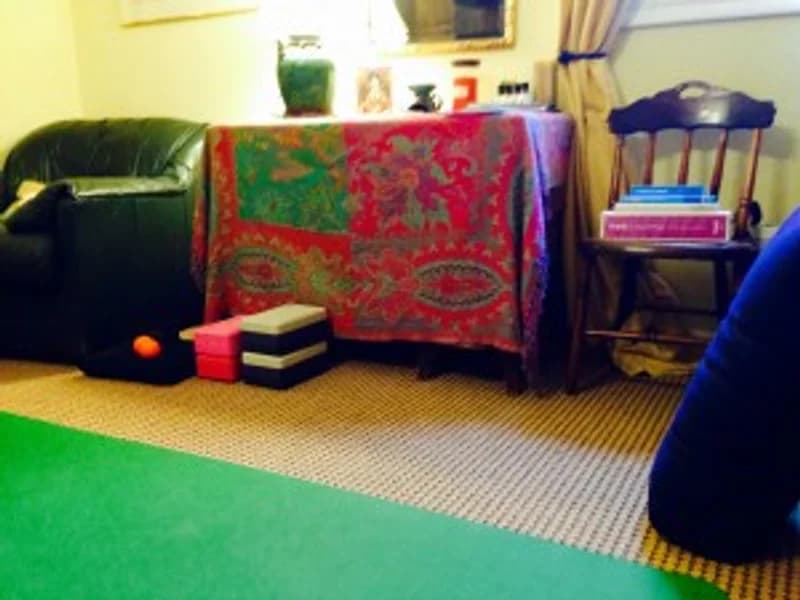
Power Yoga
Yoga is an ancient Indian tradition that has become wildly popular around the world recently. As yoga has become more popular, more ancient traditions and styles have grown to match the popularity and purpose of the many yoga students in the world. Power yoga is one of the more widely practiced types of yoga nowadays. In this article we'll take a look at a brief power yoga overview to see what the benefits are and how it is different from some other types of yoga.
What is Power Yoga?
Power yoga is a modern yoga that was derived from an older Ashtanga vinyasa yoga. Modern power yoga is more of a general term these days, and there are a lot of yoga classes out there that will claim to be "power" yoga, but are really other types of yoga with a bit of more strenuous activities than normal. Any yoga that will practice poses and stretching while ignoring proper breathing is best to be avoided.
What are the Benefits of Power Yoga?
Just about any kind of yoga is good for health. Yoga is good to keep your heart strong and healthy, it is good for your lungs and helps bring oxygen to the whole of the body (particularly the brain to improve your mental focus as well), and it is good for your bone and muscle structure. Power yoga in particular is good for building a nice looking physique - the poses are great to not only keep your insides healthy, but to also make the outside look more attractive as well. Power yoga emphasizes physical strength and building up your core more than other types of yoga which may focus on flexibility, spirituality, or other aspects. One of the key aspects of power yoga is the reliance on flowing postures - moving from one point to the next to increase strength and endurance.
Is Power Yoga Different than "Regular" Yoga?
In the past, yoga certainly was a physical sort of exercise, but the physical exercise was more of a means towards an end. The goal of yoga was emotional balance, mental focus, and a more enriched spirituality. The mind leads the body and the body leads the mind. So by doing physical exercises and becoming more aware of every movement of your body, Contemporary yoga keeps a lot of the mental and spiritual balance, but increases the initial difficulty of the physical exercises so that practitioners can see fairly immediate benefits. The more physical aspect to power yoga means that it is more immediately approachable by a Western audience, and can be enjoyed by a wider range of practitioners. Power yoga can be done by children and older people as well, it is also suitable for people of any fitness level.
How can I start Power Yoga?
Finding a class and a professional teacher is recommended any time you start a new kind of physical exercise regime, especially if you don't know so much about the activity. A lot of yoga poses can be dangerous if not done properly - the joints may be stressed in improper ways that a teacher could easily spot and fix. Before you go to class, you can get your body in shape though. The first few classes will move fairly slowly, but they will be tough if you haven't had any kind of exercise recently. To prepare, be sure to stretch out for a while to get your body limber. Do some typical cardiovascular activities such as jogging or swimming to build up some endurance and stamina - keeping up with the rest of the class without being too tired is important to learn! Strength training is important too - push ups and sit ups are also good to get your body ready for the transition into regular exercise. Power yoga is a fairly recent invention springing from Ashtanga vinyasa yoga - it is a little Westernized to be more accessible for Americans and Europeans with zero prior yoga experience. Power yoga focuses on strength and flexibility more than meditation and spirituality. The actual classes are based on moving forms and rigid "hard" postures to build your strength and core. Power yoga is good for anyone who wants to get in shape, but not get bogged down by a full lifestyle change with meditation and breath exercises.
About the Author
The Yoga Simple Team is dedicated to making yoga accessible and enjoyable for everyone. With a focus on practical tips and mindful living, we help you integrate yoga into your daily life.
Related Posts

Turning a Wanderlust Dream into a Wander-ful Adventure
Are you wander-lusting for a life abroad? Why not teach yoga as part of that? It may be easier than you think! Tori Young, an American yoga teacher, complete...

I Tried It: Stand Up Paddleboard (SUP) Yoga
Within the confines of a studio you may find an ambience of soft lights and pleasant sounds, but with warmer weather coming our way, why settle for a replica of...

How to Create a Personal Space for Daily Practice
Whether you are working with a space slightly larger than a mat or the most expansive room in your house, making physical space at home for your mediation, yoga...